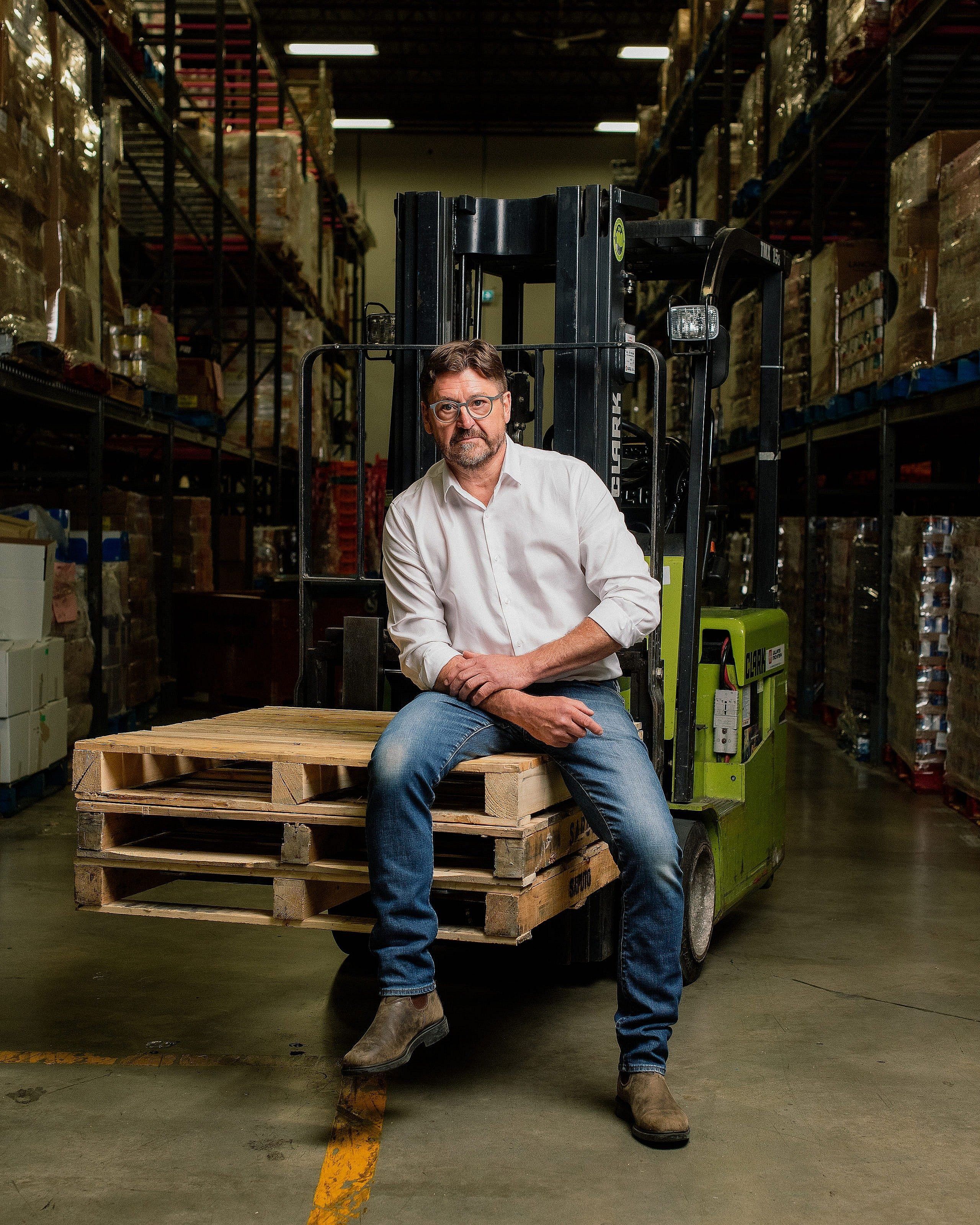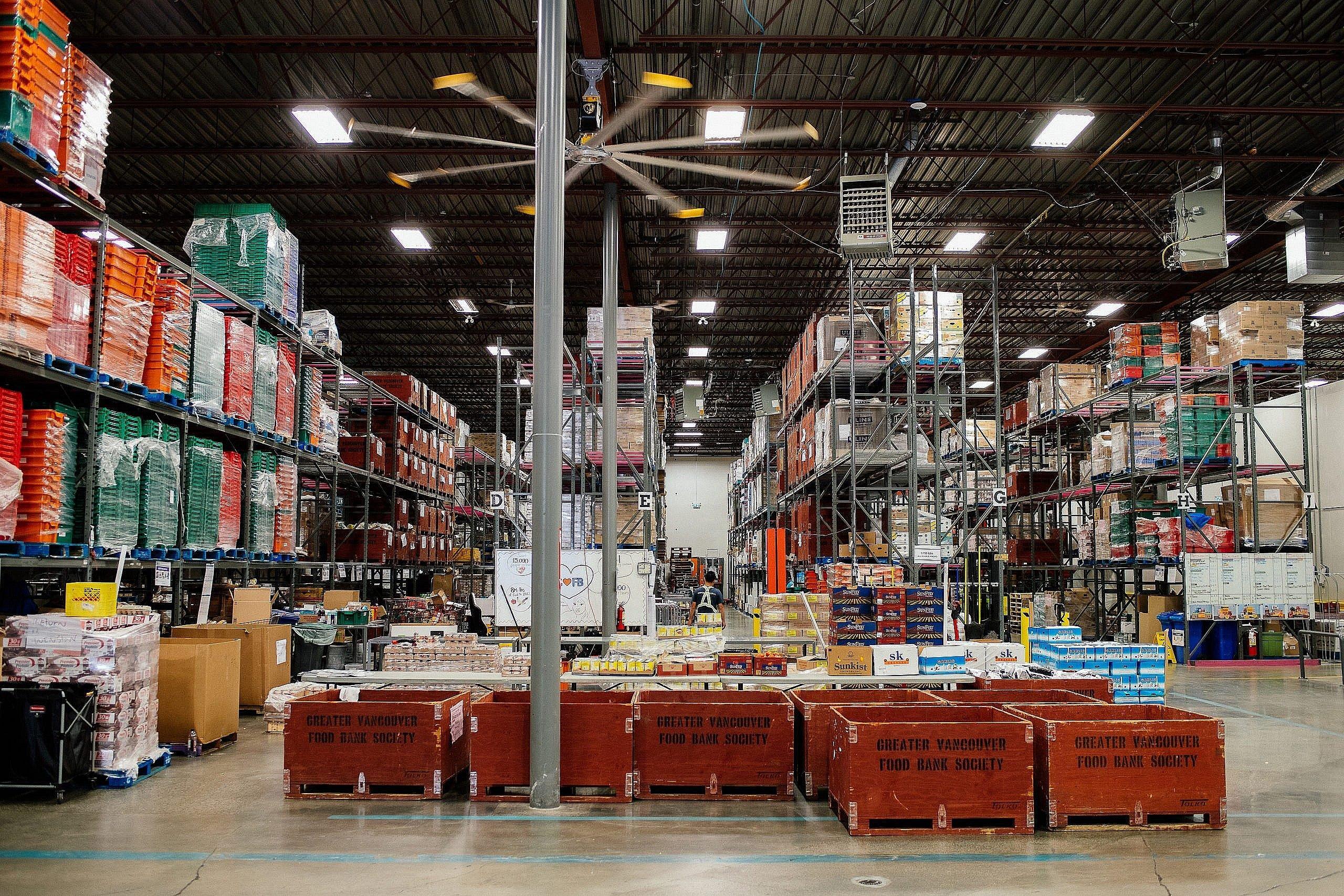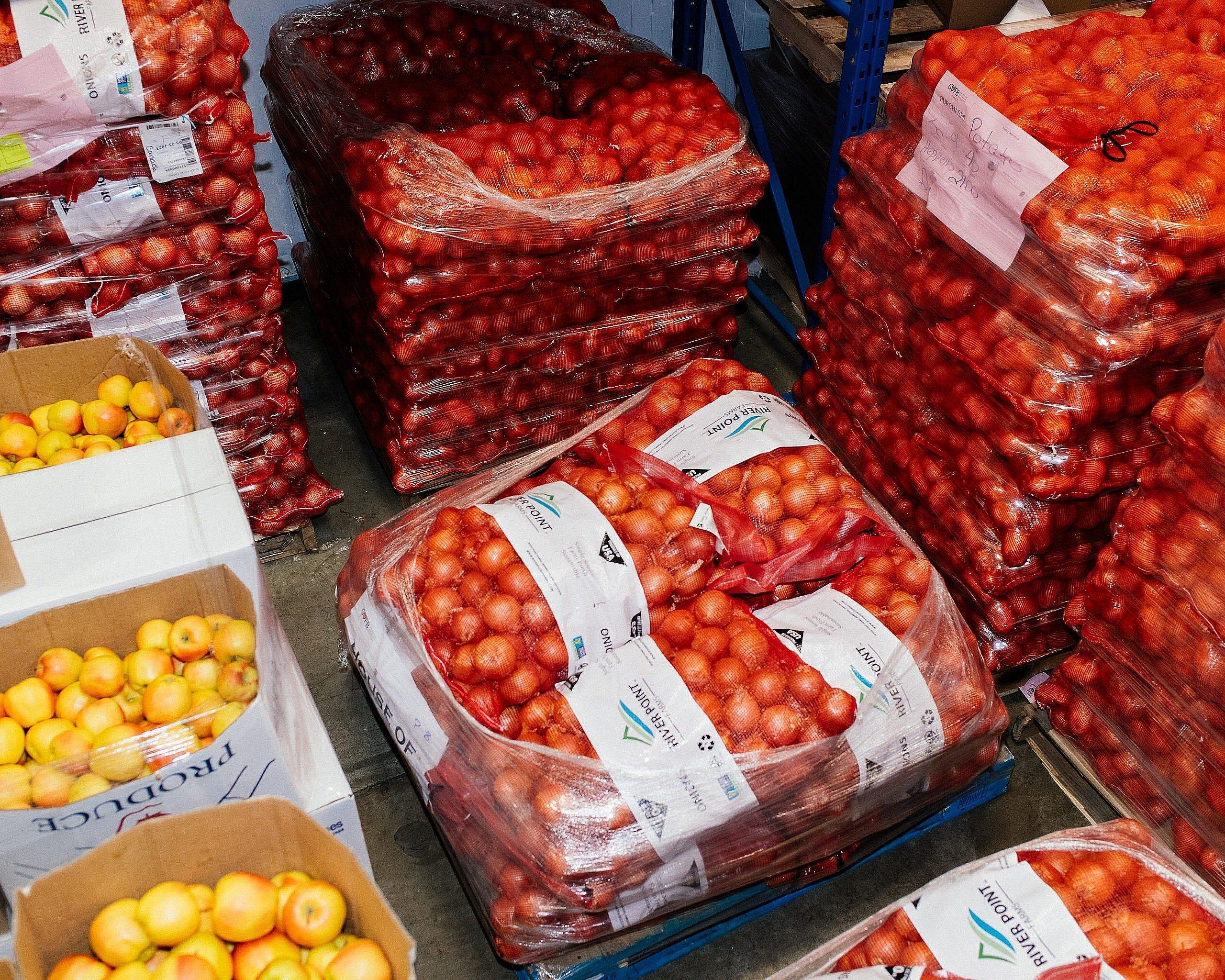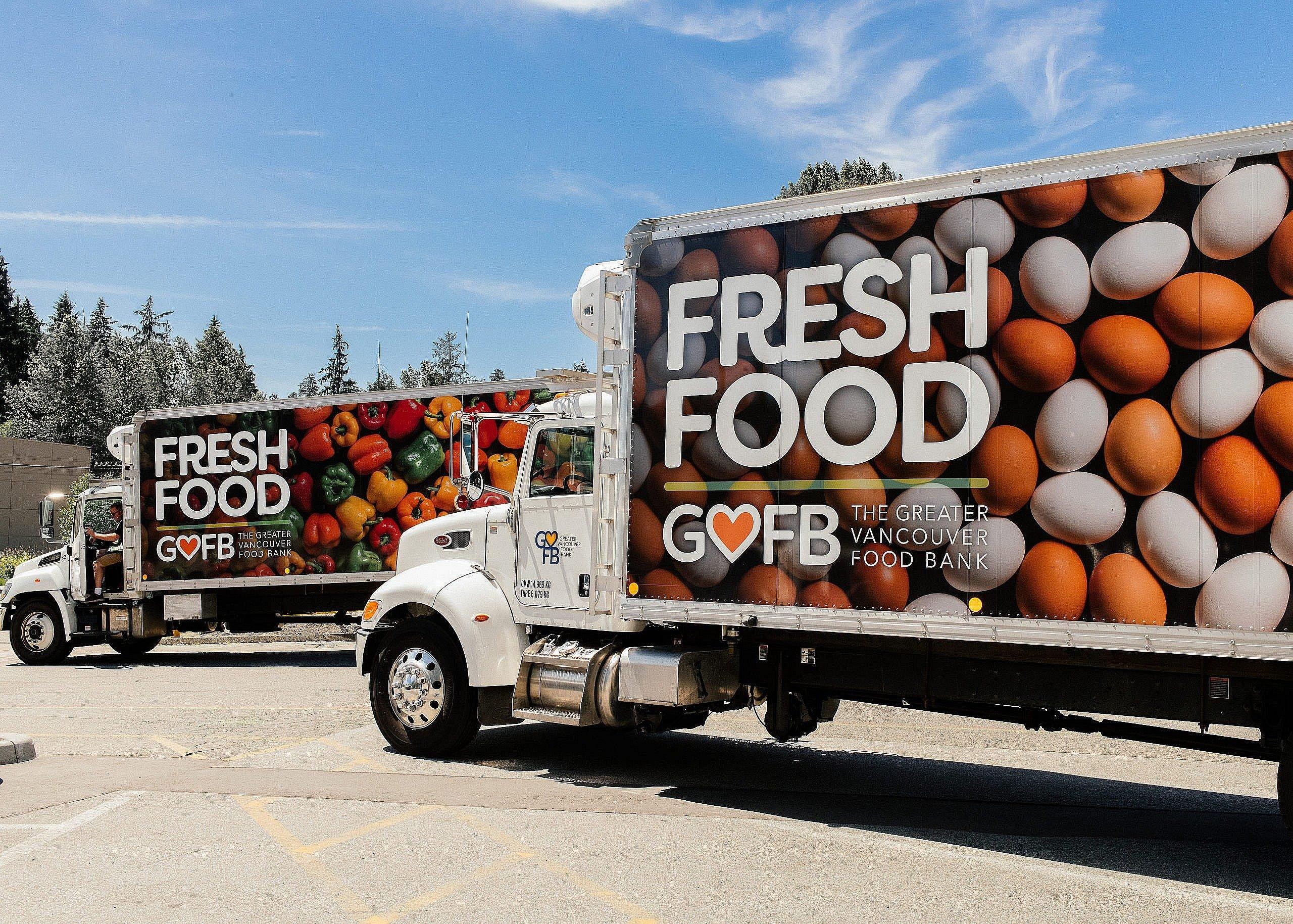I work in a B.C. food bank. We’re serving triple the number of people we used to.
For the first time, many of our clients are people with jobs who can’t keep up with the cost of living. How did we get here?

Share
July 17, 2023
About six months ago, a young single father came to the Greater Vancouver Food Bank. He was working full time, but his rent had gone up 20 per cent and he just couldn’t make ends meet. Unable to adequately feed his children, and with no other choice, he came to us. He was distraught. Like many people, he felt the stinging stigma of accepting charity, of asking for something as basic as food.
This is not an isolated or extreme case. It’s entirely typical, in fact, of the 17,000 people we currently serve each month at the GVFB. Last year, we gave out eight million pounds of food. And we’re not the only organization with such staggering numbers. We’re seeing similar situations at food banks all across Canada, as well as in New York, in Houston, in Mexico, in the U.K. In March of last year, there were nearly 1.5 million visits to food banks across Canada, the highest March usage on record. It was 15 per cent higher than the previous year, when we were in the teeth of the pandemic. Our colleagues at the Daily Bread Food Bank in Toronto say demand for their services is absolutely frightening—more than 270,000 visits in March, compared to 65,000 per month before the pandemic. According to a recent report from Food Banks Canada, food bank usage is up 35 per cent from 2019, and one in seven clients is employed. Our base of lower-income donors has eroded, and some of them have even become food bank users.
We’ve had to grow into a massive operation to accommodate all this demand. We have a paid staff of 65 people and rely on a legion of volunteers—last year they put in 65,000 hours. Our operating budget has grown past $30 million, and almost all of our funding comes from donations. Since the pandemic, we have received some federal grants, but they cover a small percentage of our overall budget. Next year I will spend $8.5 million buying food for our clients. We distribute food in two different ways: directly to our clients at our distribution hubs (this accounts for 60 per cent of our outbound food this year) and indirectly through community agency partners like women’s shelters, after-school programs and soup kitchens on the Downtown East Side. We supply them with food once a week to carry out the meal programs they run. Since I started, we’ve gone from 74 agency partners to 139.
Our clients have changed as well. Food banks have traditionally fed the working poor, people on social assistance, people with disabilities—the most impoverished and vulnerable members of our society. But in the last few years, we’ve seen many people who are working full time and still can’t make ends meet. People who are earning $40,000 or $50,000 per year and, after they pay their bills, there’s just nothing left. We register new client families where the parents have been skipping meals so their children can eat.
We see retired teachers and nurses—people you think would have great pensions that they can live off for the rest of their lives. We supply a food bank at the University of British Columbia, which provides food for 450 people a week. It’s horrifying. International students are among the most frequent users of food banks across the country, and they pay much higher tuition fees than domestic students. In an economy like this, their funds erode faster than anticipated. And so we have these students who haven’t eaten in days, sitting in class trying to study. It’s just wrong. They’re tired of the situation they find themselves in, fed up with living in chronic poverty.
Where does this go, and when does it stop? When I became CEO of the organization in 2019, we were supporting 6,500 clients per month. That number has nearly tripled in just five years. What’s going to happen in another five years’ time? That’s what keeps me up at night. People often say that food banks are just a Band-Aid solution. My colleague Alex Boyd of the Greener Village food bank in Fredericton put it much better: we’re not a Band-Aid, we’re a tourniquet.

Like many food banks, the GVFB got its start in a church. The Christ Church Cathedral on Burrard Street, to be precise, in 1983. Food banks were a new thing then—the first one had opened in Edmonton two years earlier. They were designed as a temporary charitable response to the tough, recessionary times of the early 1980s. Interest rates were rising, inflation was high and people were going hungry. We served homemade sandwiches and, over time, added sit-down meals. Residential fridges were tucked into many corners of the building.
What began as an emergency response quickly grew entrenched, and food banks like ours became permanent fixtures in many cities. Between 1982 and 1985, 94 food banks were operating across Canada. By the end of that decade, 378,000 people were relying on food banks every month.
Food banks were never intended to address the systemic, societal problems that led to their creation in the first place—wage stagnation; the withering of high-paying, unionized jobs; cuts to income supports and social services. Food banks were established as an emergency stop-gap, to meet the immediate needs of people unable to put food on their tables. But throughout the ’80s, ’90s and 2000s, the emergency kept getting worse. Demand for food bank services accelerated through other economic downturns, the subprime mortgage crisis of 2008 and the pandemic. Social assistance rates have not kept pace with inflation, with the provinces and territories only making modest increases to social assistance rates, leaving people mired in poverty. While B.C. recently increased social assistance benefits by $2,100 per household per year, Vancouver still has the highest poverty rate in the country—11.2 per cent as of 2021. Precarious, gig and on-demand work is also an urgent problem in the province: on paper, many people have jobs, but without protections, benefits or dependable wages.
Vancouver, and by extension Canada, is in the midst of a terrible perfect storm. Multiple, intersecting crises have converged in the last few years, bringing staggering numbers of people to our door—a mental health crisis, an opioid epidemic, insufficient wages. Even recent wage increases can’t catch up with inflation: grocery prices were up nine per cent in April, gas prices over six per cent. People making modest incomes are still overwhelmed.
What’s happened to housing over the last 10 to 15 years, especially, is astronomical. It’s caused people to leave cities, to put off having children or getting married—and it’s pushed more and more working people to the food bank. Vancouver has the highest average rents in the country, with the average rent for a one-bedroom apartment at $2,831. As a result, low-income people in B.C. now spend more of their income on housing than any other population in Canada. With the median price of a house in the city now north of a million dollars, ownership is pretty much out of the question for most people, even for those on good salaries. In April, mortgage costs were up 28 per cent compared to the same time last year, and then in June, the Bank of Canada hiked rates again. People who managed to buy a house and are now up for mortgage renewal may lose their homes.
It’s shockingly simple: income is directly tied to food insecurity. People don’t have enough money to buy groceries. Once someone pays rent, once they pay for a vehicle to get to work or buy a transit pass, food is the last expenditure. People try to save money in that area because they can’t cheat anywhere else. The price of gas goes up 10 cents and we see more people coming to the food bank. That’s how close to the edge people are living. During the pandemic, when people received CERB cheques, the number of people coming to our food bank—to food banks across the country—dropped 30 per cent. If we had a permanent universal basic income, demand would absolutely start to slow. In the West, we’ve created a huge disparity between those who have and those who don’t.
I arrived at the Greater Vancouver Food Bank almost accidentally. I was born in Northern Ireland in 1964, and I travelled the world as a chef, working in hotels and restaurants in London, Zurich and Melbourne. In a magazine, I saw a picture of Whistler, B.C., and thought it looked pretty cool, so I moved to Vancouver in 1996.
By the mid-2010s, I was CEO at Terminal City Club, a private members club. Many people expected me to fail. Making a chef the CEO of a private club? They thought the board had lost their mind. But I’ve always been a numbers guy, good at math, so when I ran the three kitchens in the club, I had all sorts of charts showing the growth of membership, the growth in food sales, the labour costs and food cost percentages.
After Terminal City, I became vice-president of operations at Securiguard, the security company. As it does every year, Securiguard held a day where you could spend a day volunteering at a charitable organization. My boss and I chose the GVFB. The experience was eye-opening—and not in a good way. In 2018, the organization was located in a run-down, older warehouse on Raymur Avenue in East Vancouver. And the quality of the food they were giving out was terrible: boxes of Kraft Dinner and high-sodium instant noodles. There was a sense of “Just be grateful for what you get.” But seeing the available food and what they could hand out, I thought, There must be a better way than this. I knew from my career how much food is out there, high-quality food that’s being wasted. Soon after that volunteer day, an executive search company was looking to hire a new CEO for the GVFB. They came to me and said, “We’ve got something that we think would be perfect for you.”

They were right. I’ve always found food very powerful. Growing up, the kitchen was a big focal point in our house, as it is with many Irish families. I was the youngest of four kids, and my mother put me on the kitchen counter beside her while she was baking. I’d help as much as a three- or four-year-old could and make a big mess. The Swiss way of food, which I learned in Zurich when I was 19, is to only eat what’s in season. And they have a season for absolutely everything: there’s a wild mushroom season, an asparagus season, an apple season and a game season. It’s the way everyone should eat. Though I’m not working as a professional chef now, I still cook for my family, and I still love farmers’ markets. Food remains a big passion of mine.
I knew that even if the GVFB couldn’t directly address the huge societal problems that made its existence necessary, it could provide better access to good food, which would improve people’s health, their sense of community and their self-worth. Soon after I was hired, our lease in East Vancouver ended and we had to leave our headquarters. It was probably the best thing that ever happened to us. One of my first jobs was to find a new warehouse, and so we had the opportunity to put together something that looked a certain way, that had a certain feel. When I first started, I kept hearing the same thing: people are ashamed to go to a food bank. I think if you have a dark feel to your location, then that permeates the whole experience. I wanted to change that. But I also wanted us to grow.

In 2019, we moved into the 40,000-square-foot space in Burnaby that currently houses our offices and warehouse. To keep pace with the exploding demand and to accommodate more fresh food, we needed somewhere a lot bigger. I hoped to banish the shame and stigma of food bank usage, so I wanted the warehouse to be a place that was bright and cheerful, that was clean and tidy, that had music playing. I wanted to create a place where people come and have a smile on their face. Most importantly, I wanted to completely change the kind of food we were giving people. People who are going through a tough time can afford those dollar-store instant noodles. What they can’t afford are eggs and milk, fresh fruits and vegetables, meat.
I knew that providing high-quality, nutritious food would be a key to our success. If we gave people, especially children, proper nutrition, we would save governments millions of dollars in health care. We would have fewer cases of diabetes and other diseases that cost the system so much money. However, we needed to increase our refrigeration capacity to make room for all that fresh food. During the pandemic, we received a round of funding from the federal government, which we used to do just that. We spent almost $250,000 on 20 industrial freezers, which increased our capacity by 400 per cent. We also had a mural painted that says “Refrigeration Alley,” with a stylized heart filled with different kinds of foods. It’s my favourite place at the GVFB.
We now have a very simple rule: if you wouldn’t feed it to your kids or family, we’re not going to hand it out to our clients. In January of 2022, we stopped doing public food drives, and we no longer accept any food donations from the public. I have two daughters—they’re 23 and 18 now—but long before I was in my current role, when they were younger, they’d come home from school and say they had a food drive. What do you do? You go into your kitchen cupboard and take out whatever’s in the back corner that’s been there for a couple of years and that you’re not using. Much of that stuff is outdated or poor quality. It’s what people seem to think will do for the food bank. Thirty per cent of what we received through drives was unfit for human consumption. We would have had to pay to dispose of it: it cost us $30,000 a year to eliminate some of the stuff the public was donating. Instead, we now have virtual food drives, where people sign up on our website, browse through some of the different types of food we provide and select their donation amount. This allows us to buy the food we actually want. Donors can also challenge other organizations to compete with fundraising, ask their employer to match the employee contributions, and customize their drives with corporate logos and colours.
Sixty per cent of the food we give out now is fresh. We create a new menu every week, following Canada’s Food Guide, so clients are always going to receive the components of a balanced plate. They may get fresh pasta and ground beef, and if we’re giving those out, they’ll definitely be getting onions, carrots and a jar of pasta sauce. They’ll also get a variety of fruits and vegetables. I spend $56,000 a month buying eggs because they’re so cross-cultural and healthy. And everybody gets fresh bread. Bimbo Bakeries, one of the biggest bakeries in the world, donates between 4,000 and 5,000 loaves per week.
Thanks to these kinds of industry donations, and the connections we have with the grocery chains and their large distribution centres, we can save a lot of perfectly good food that’s not considered consumer-grade. In Metro Vancouver alone, more than 35 tons of good, edible food ends up in landfill every day. I hate saying “food waste,” because the food that’s getting donated is not waste. Eight months ago, we received a donation of about five tons of avocados, the kind you get in the net bags. There was supposedly something wrong with them. I ran around, holding up a bag, asking my staff to guess what was wrong. Nobody could. It turned out that these avocados were a few centimetres too small for the organization that was buying them, according to the quality control standards they set for what they wanted to sell to the public. They were all going to be discarded. More recently, 20 tons of green grapes arrived from Chile at the Port of Vancouver. They were two degrees off the perfect temperature, and they were rejected. We took them all. I would gladly feed those grapes to my family. We had so many grapes, we were literally handing people cases of them.
Loblaws/Real Canadian Superstore is one of our biggest supporters. For each of their shipments, it’s likely that a percentage of the food they ordered hasn’t gone out to stores because the demand is not there, and there’s just so much abundance. Previously, that excess was sent to the landfill. We now pick it up and distribute it to our clients and community agency partners. Last year, over 700,000 pounds of pre-consumer food came from Loblaws, and our hope is that this continues well into the future. They are a remarkable partner and supporter of the GVFB. In June, we had cheese with a best-before date of September on it. We have nicer food in the fridges here than I have in my own house.
I am no stranger to criticism and received more than my fair share when I first started with the GVFB, especially in Vancouver, from a bunch of people who wanted to save the world. “What’s a business guy doing at the food bank?” they asked. “You don’t have a degree in social services.” Or they wonder how I went from a private club to a food bank—they think it couldn’t be more different. In reality, they couldn’t be more similar. The GVFB is a business, and it needs to be run like a business. I have no less of a fiduciary responsibility to a monthly donor’s money than I do to the monthly dues from a private club member. My job is to maximize the use of those funds and make them go as far as possible. And, whether it’s a private club member or a client at the food bank, I have to humanize the experience so it’s really special. As we push for governments to address the root causes of food insecurity, we operate the GVFB the very best way we can.
Our provincial and federal governments need to do much more. Not just to address the systemic issues that have led to increased food bank demand, but also to rethink a system that exacerbates those issues. But there are creative solutions that we can focus on together. I don’t think we can stand up and demand basic income for everybody, but we need to have meaningful dialogue, between the big food banks in Canada, including us, and all levels of government.
Many people—politicians included—believe there isn’t enough food to go around. But we have plenty. Canada produces enough food to feed 52 million people. And yet, out of 40 million people in the country, seven million go to bed hungry. That’s a broken food system. A couple of months ago, there was a luncheon at the Burnaby Board of Trade and David Eby, B.C.’s premier, said that his government would invest $200 million to ease food insecurity, with much of that going to farmers so they can grow more food. I just shook my head. We don’t need to grow more food. There’s no shortage of food. There’s a distribution problem that I want to be part of solving. Recently, I took a veteran Vancouver city councillor on a tour through our Burnaby warehouse, and at the end of it, she said the same thing I always hear: “I had no idea.” I thought to myself, “What? How could you possibly have no idea, when the GVFB distributes some $2 million worth of food to your city’s hungry citizens every month?”
We need to build infrastructure not only in B.C., but all over Canada. We need infrastructure and warehousing where we can store this excess and then get it distributed. That’s the biggest problem we have. But it wouldn’t be too difficult to build. I recently toured some executives from Sysco. After the tour, they told me they have a contract with Subway restaurants and that anywhere there’s a Subway, they deliver. They said, “Anytime we have room on a truck, we will move your food to that region for free.” Now we supply the Lake Country Food Bank and the Nicola Valley Food Bank in the Okanagan almost every week, using Sysco trucks. The difference this makes to our clients, getting all this fresh food instead of non-perishable stuff, is incredible. If the government gave us the money they’re giving to farmers to grow more food, we could put it toward infrastructure and make a huge difference.
We also need legislation so that grocery chains can’t standardize things like those avocados, leading to so much waste. There should be penalties for excess food going to landfill. You can’t dump plasterboard in landfill, but you can dump 20 tons of grapes? Why are we throwing away millions of litres of milk? It’s all about making money. I don’t want to sound like a hippie who’s against making money. I’m all for making money. But when it comes to something as basic as food for kids in school, I get angry. I try to stay focused on the positive as much as possible, but the system must change.
We run the GVFB like a business. But our goal is the opposite of most businesses—we want our customer base to shrink. It breaks my heart to see things speeding in the opposite direction. We’re running out of space again now, and are planning a move to yet another location, adding much-needed storage and more refrigeration. It’s exhausting. I’d love to retire. I’d love to see us go out of business. But it’s not happening. The demand is nonstop, and our clients require unbelievable caring and agility. What can I do? Continue to run on the treadmill—to wake up, show up and hopefully create the change needed to improve this broken system.